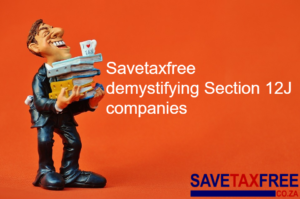Happy tax year!
By Leya Mall | 27 February 2019
Welcome back readers, to the Tax-Saving South African, where I walk with you in your personal journey through a range of financial themes
We’re close to the end of February – the end of the tax year – so it’s time to look at the “exhilarating” world of tax returns. Yay.
Even though the exercise is enough to give you a migraine, if it gives you any comfort, I too will be experiencing this for the first time – not the migraine but the tax part. Let’s strap ourselves in and have a lovely talk.
Personal Income tax
As usual, before we dig right in, context is important and in this case we need to understand more clearly what personal income tax is and how it relates to tax returns. The South African Revenue Services (Sars) describes personal income tax as the normal tax which is paid on your taxable income. It’s called pay as you earn (PAYE) – and be aware: you have to pay tax on any income, not just your salary. That includes such things as rental income you may receive, investment income, trust funds and so on. Sars reaches into every nook and cranny where money circulates in society and takes its slice. No additional income comes without tax – who knew right?
Except, of course, income from tax-free savings accounts that I’m always banging on about – you still have two days to utilise one for the 2018 financial year (nudge, nudge, wink wink).
First some good news: you don’t pay tax if you earn R79,000 a year or less. This amount was increased in the recent Budget from R78,150.
There’s some more relief: you don’t have to actually file a tax return with Sars if your salary over the tax year (1 March to 28 February) is less than R500,000*, provided that:
- You have no car allowance/company car/ travel allowance or other income like the above examples of taxable income.
- You are not claiming tax-related deductions/rebates (like medical aid, retirement annuity contributions other than pension contributions made by your employer, travel).
- You fall into the tax rebates category.
Differing income levels fall into different tax brackets, and just to sweeten the deal I’ve used a nice little table, courtesy of the 2019 Budget.
| Annual taxable income (in rands) | Rates of tax (R) |
| 0 – 195 850 | 18% of taxable income |
| 195 851 – 305 850 | 35 253 + 26% of taxable income above 195 850 |
| 305 851 – 423 300 | 63 853 + 31% of taxable income above 305 850 |
| 423 301 – 555 600 | 100 263 + 36% of taxable income above 423 300 |
| 555 601 – 708 310 | 147 891 + 39% of taxable income above 555 600 |
| 708 311 – 1 500 000 | 207 448 + 41% of taxable income above 708 310 |
| 1 500 001 and above | 532 041 + 45% of taxable income above 1 500 000 |
Sure, Sars could make it all look a lot simpler but what is effectively happening is that you pay tax according to the rates in the table above, but get rebates as per the table below:
|
||||||||||||||
Just for some context on rebates: a tax rebate is an amount by which SARS reduces the actual taxes owing depending on certain circumstances. The most common rebate in tax terms is for age. The applicable amounts are adjusted annually but there are three different levels, subject to your age and the threshold of the yearly taxable income. You also get deductions on our retirement annuity and medical insurance contributions.
The dreaded bracket creep
So, your employer is thrilled with your work performance and gives you nice 20% raise. You excitedly start thinking about all the shiny things your new money can buy. But … there’s always a but with the taxman.
What sometimes happens is your higher salary simply moves you into a higher tax bracket, and your extra earnings simply go straight to the taxman. For example, assume someone earned R300, 000 a year. A 20% salary increase means your new income of R360 000 puts you into the higher tax bracket and your calculations are as follows:
According to the tax table, the standard tax you pay would be worked out as follows:
|
|||||||||||||||||||||||||||||||||
The real problem with the low adjustments to the tax bands means inflation adjustments to salaries will not result in equivalent increase in take home pay.
That kind of sucks right? So be on the lookout for that. Your friendly employer might be happy to rather switch to fringe benefits but they bring a host of other tax issues into play. It might be useful in such a case to speak to a tax consultant. (In fact, when you start a new job it may be useful to ask a professional how to structure your income to LEGALLY minimise your tax payments.)
But don’t panic about the calculations, you can use the TaxTimSA salary calculator to arrive at your yearly tax amount minus all the anxiety.
The dreaded tax return
Now we can look at the tax return part, which a is a tax document that taxpayers must complete and submit to Sars each financial year. For individuals this is called an Income Tax Return for 12 months commonly known as an ITR12 form.
Sars has an easy-to-use system called eFiling. All you have to do is register online and presto! You become even more of a law-abiding citizen. Impressive isn’t it? It takes two minutes to sign up, trust me, I did it in preparation for this article. eFiling for the upcoming financial year opens on 1 July 2019 and the deadline for submissions has yet to be confirmed.
If you feel that technology isn’t your thing you can visit your local Sars branch for assistance in filing your tax return. But I can’t promise you won’t age while waiting in the line.
Important documents when filing
- An IRP5 form which is a tax certificate from your employer
- Details of medical expenses paid and medical aid contributions that have been made
- Relevant certificates reflecting your retirement annuity fund contributions
- Certificates you received for local interest income earned like ETFs
- Any other documentation relating to income received like rental income
- Other documentation relating to the allowable deductions you wish to claim
Don’t stress too much about these, you don’t have to go hunting around for them. You employer will supply you with the IRP5; your medical insurance will send you a tax certificate reflecting all the required info, as will your retirement annuity service provider. Those three are the most common documents needed but guess what: you usually don’t even need to worry about them because those forms are also sent directly to Sars and when you log into the eFiling website, hey presto! The forms are all there with all the information on them. You simply need to check them for accuracy.
If any of the certificates are not there, you will need to chase after them or declare the amounts, for example for rental income.
Here’s another positive point: you can always call Sars to find out anything you need – their helpline is refreshingly quick and capable so it’s a quick an easy call. All you need is your tax reference number and your ID number EVEN if you haven’t registered for eFiling. They even send you a confirmation email and SMS. I am super impressed at the efficiency of Sars as a first-time user myself. But maybe that’s because they take my money every month.
At the end of the tax return process, you may or may not receive a refund (the trick is to cross your fingers and pray). Kidding but not really…
See? That wasn’t so bad after all, although I still feel like this process is enough to make me pull out my already short hair.
Speaking of returns I wonder if we can return the responsibilities that come with being a working adult? Hmm, perhaps a topic for another column. Anyway, I digress, Happy tax year all!
*Since this article was first published, as of 4 June 2019, the tax return threshold has since increased from R350,000 to R500,000.
Continue following this series to become a wiser tax-saving South African!






